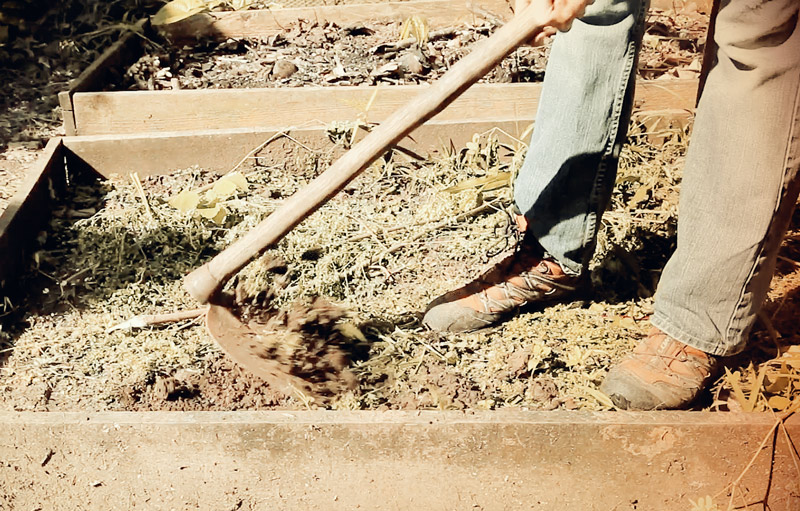
I apologize in advance to those of you dealing with January cold. Maybe this will send some warmth your way.
Back on Wednesday I posted that I was going to say “heck with it” and plant garden beds again even if the house sells before I can harvest.
I liked this comment by dfr2010:
Sounds like you made the right choice. Possible outcomes:
1. You get to harvest what you’ve planted, without moving.
2. You have to move, but get to harvest anyway.
3. You have to move, and someone else moves in … you’ve given them quite the potential house-warming present!
Doesn’t sound like there’s any real downside to me.
Heck, I’ve planted fruit trees across multiple previous properties at this point. People are harvesting and enjoying fruit now that they didn’t have to plant. No loss.
On Wednesday after finishing up some office work I took to the gardens and brought the camera with me.
You can see how I use a garden bed as a compost pile for a period of time, then rotate to another bed. I first did this on a lousy, sandy bed back in North Florida. The crops had done horribly in it, so I thought “hey, why not make THIS space the compost pile instead of piling up compost somewhere else?”
This is a crazy idea I like to call
Using a Garden Bed for a Compost Pile
This works great, as I share in greater detail in Compost Everything.
I don’t bother turning compost anymore.
I just pile up compostable materials and let them rot down over time.
If you do this in a garden bed, all the good nutrition that seeps out of the compost goes right into the soil beneath where your crops will find it when you later rake away the compost and plant the ground. Worms are also drawn to that area by the delicious rotting kitchen scraps.
Look at this beautiful stuff!
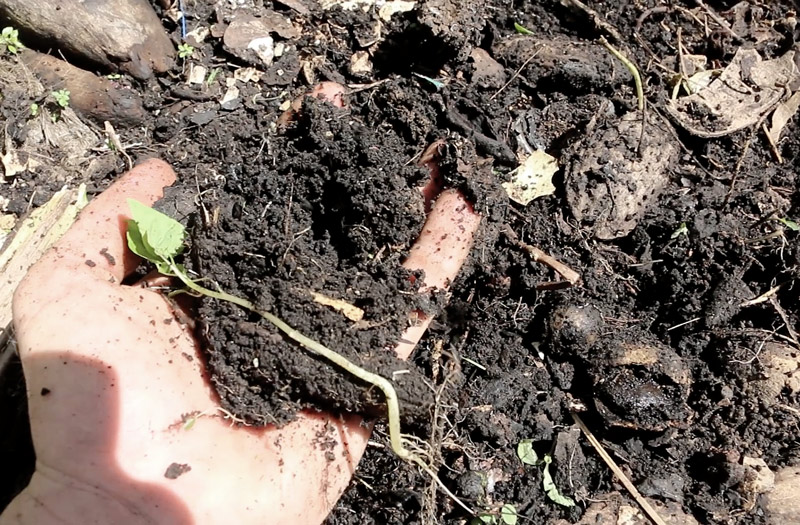
After letting a bed rot down like this for 6 months to a year, you can then plant right on top… or steal some of that compost for another project, making sure to leave a bit behind for the crops to come.
I sifted out about 3+ gallons of good compost from this bed using a piece of hardware cloth. You can still see some eggshell pieces, or as Rachel calls them, “slow-release calcium”:
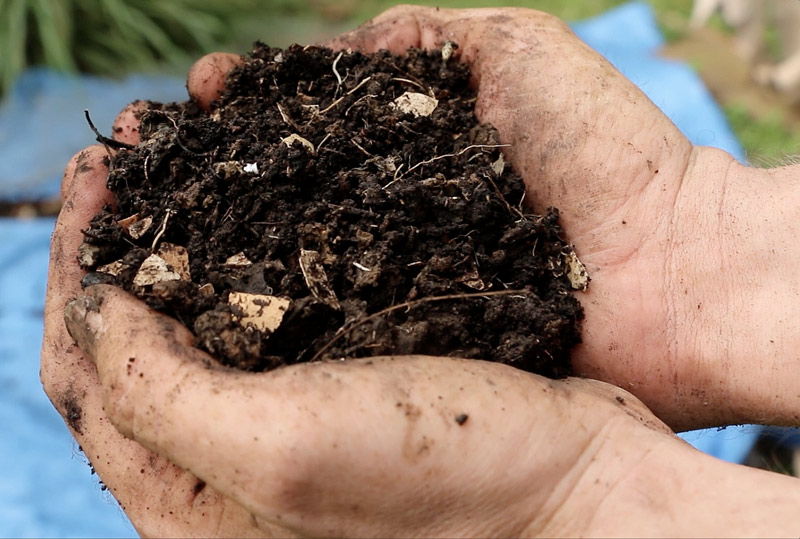
This finer compost gets used when I prepare beds, make potting soil and as food for my potted fruit trees.
The rougher chunks that don’t make it through the screen get thrown into the new compost/garden bed. I also chopped-and-dropped a self-planted moringa tree I’ve let grow there.
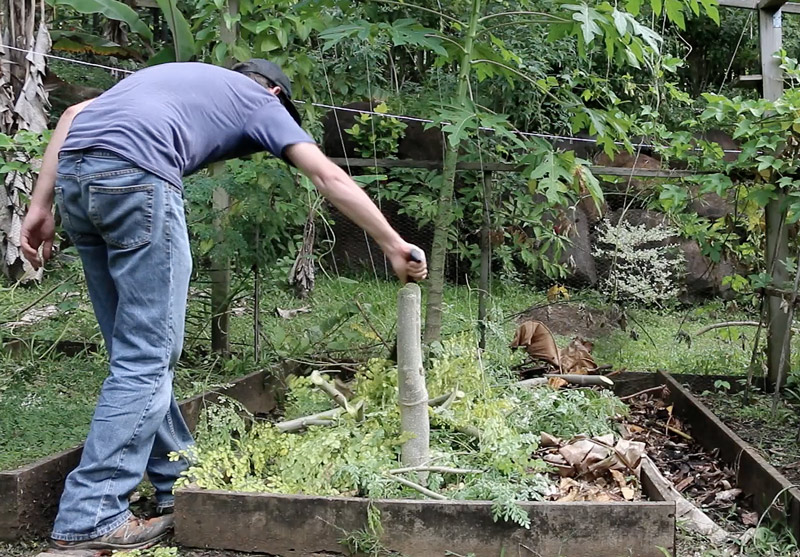
Moringa leaves can be used as a fertilizer all by themselves, so it’s great to have some growing near or even in your garden area.
As for the previous compost bed, I broadforked it with my trusty Meadow Creature broadfork to loosen the soil for planting.
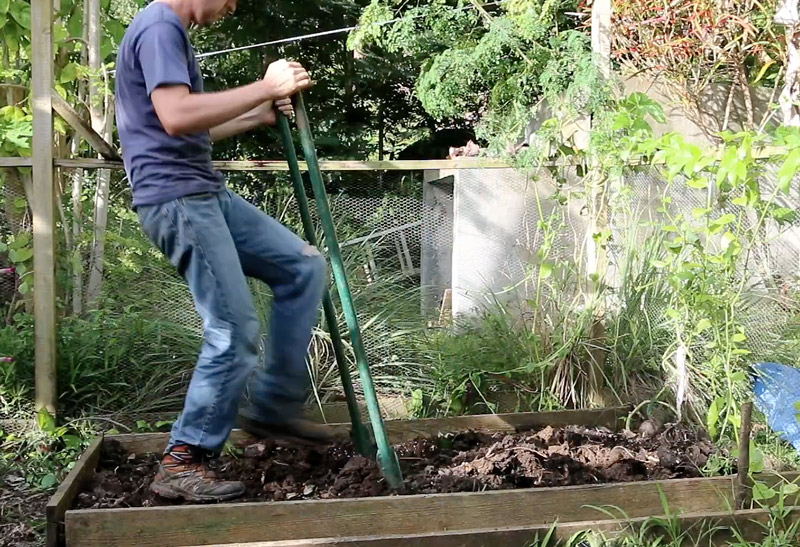
Look at me! I’ve literally broadforked my head off!
Man alive, it feels good to get in the dirt again. As for the other beds which weren’t covered with compost, I used my grape hoe to get those weeded, then broadforked them as well.
Now I need to supercharge all these beds with long-term soil-building materials.
…but you’ll just have to wait to see how I do that.

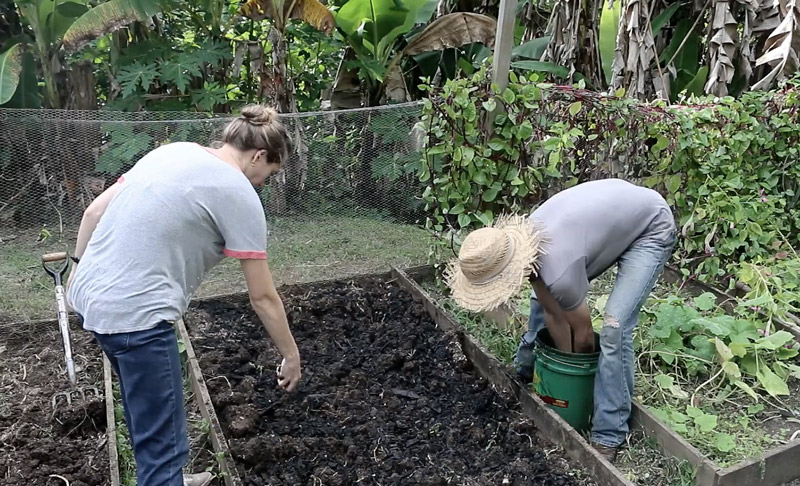
1 comment
Glad to hear my words helped – and you sound almost-giddy with excitement at “playing in the dirt” again. We’re getting some much-needed rain here in Putnam County, although we are likely to get a frost behind it. I’ve put pea seeds in the ground, while my friend a couple small towns up from me has green beans ready to eat … in early January.
Comments are closed.